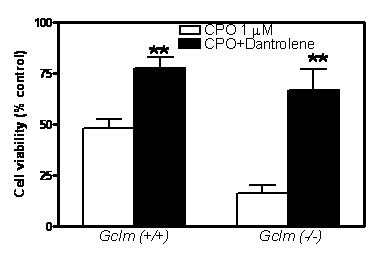Grantee Research Project Results
2007 Progress Report: Molecular Mechanisms of Pesticide-Induced Developmental Toxicity
EPA Grant Number: R831709C001Subproject: this is subproject number 001 , established and managed by the Center Director under grant R831709
(EPA does not fund or establish subprojects; EPA awards and manages the overall grant for this center).
Center: Center for Air, Climate, and Energy Solutions
Center Director: Robinson, Allen
Title: Molecular Mechanisms of Pesticide-Induced Developmental Toxicity
Investigators: Faustman, Elaine
Institution: University of Washington
EPA Project Officer: Callan, Richard
Project Period: November 1, 2003 through October 31, 2008 (Extended to October 31, 2010)
Project Period Covered by this Report: November 1, 2006 through October 31,2007
RFA: Centers for Children's Environmental Health and Disease Prevention Research (2003) RFA Text | Recipients Lists
Research Category: Children's Health , Human Health
Objective:
Approach:
During the previous cycle of this research project, we conducted studies evaluating three classes of pesticides in both in vitro and in vivo assessments. A final manuscript has resulted from Dr. Xia’s studies comparing the impact of chlorpyrifos (CP) in embryonic and newborn cortical neurons. Her investigations into the proposed mechanisms of toxicity associated with CP and its two major metabolites, chlorpyrifos-oxon (CPO) and 3,5,6-trichloro-2-pyridinol (TCP; the breakdown product of both CP and CP-oxon) were reported recently in a publication (Caughlan, et al., 2004) and are summarized in this progress report. We focused our experiments to address arsenic and methylmercury neurotoxicity and expanded significantly our understanding of the molecular mechanisms of toxicity associated with CP and its two major metabolites in embryonic midbrain cultures.
Progress Summary:
 |
 |
Future Activities:
Journal Articles on this Report : 3 Displayed | Download in RIS Format
| Other subproject views: | All 34 publications | 17 publications in selected types | All 16 journal articles |
|---|---|---|---|
| Other center views: | All 333 publications | 157 publications in selected types | All 133 journal articles |
| Type | Citation | ||
|---|---|---|---|
|
|
Costa LG, Cole TB, Furlong CE. Gene-environment interactions:paraoxonase (PON1) and sensitivity to organophosphate toxicity. LabMedicine 2006;37(2):109-113. |
R831709 (2005) R831709 (2007) R831709 (Final) R831709C001 (2007) R831709C002 (2007) |
Exit Exit |
|
|
Costa LG, Giordano G, Guizzetti M, Vitalone A. Neurotoxicity of pesticides: a brief review. Frontiers in Bioscience 2008;13(4):1240-1249. |
R831709 (2005) R831709 (2007) R831709 (Final) R831709C001 (2007) R831709C002 (2007) |
Exit Exit |
|
|
Giordano G, Afsharinejad Z, Guizzetti M, Vitalone A, Kavanagh TJ, Costa LG. Organophosphorus insecticides chlorpyrifos and diazinon and oxidative stress in neuronal cells in a genetic model of glutathione deficiency. Toxicology and Applied Pharmacology 2007;219(2-3):181-189. |
R831709 (2005) R831709 (2006) R831709 (2007) R831709 (Final) R831709C001 (2006) R831709C001 (2007) R831709C002 (2007) |
Exit Exit Exit |
Supplemental Keywords:
Progress and Final Reports:
Original AbstractMain Center Abstract and Reports:
R831709 Center for Air, Climate, and Energy Solutions Subprojects under this Center: (EPA does not fund or establish subprojects; EPA awards and manages the overall grant for this center).
R831709C001 Molecular Mechanisms of Pesticide-Induced Developmental Toxicity
R831709C002 Genetic Susceptibility to Pesticides
R831709C003 Community-Based Participatory Research Project
R831709C004 Pesticide Exposure Pathways Research Project
The perspectives, information and conclusions conveyed in research project abstracts, progress reports, final reports, journal abstracts and journal publications convey the viewpoints of the principal investigator and may not represent the views and policies of ORD and EPA. Conclusions drawn by the principal investigators have not been reviewed by the Agency.
Project Research Results
16 journal articles for this subproject
Main Center: R831709
333 publications for this center
133 journal articles for this center
